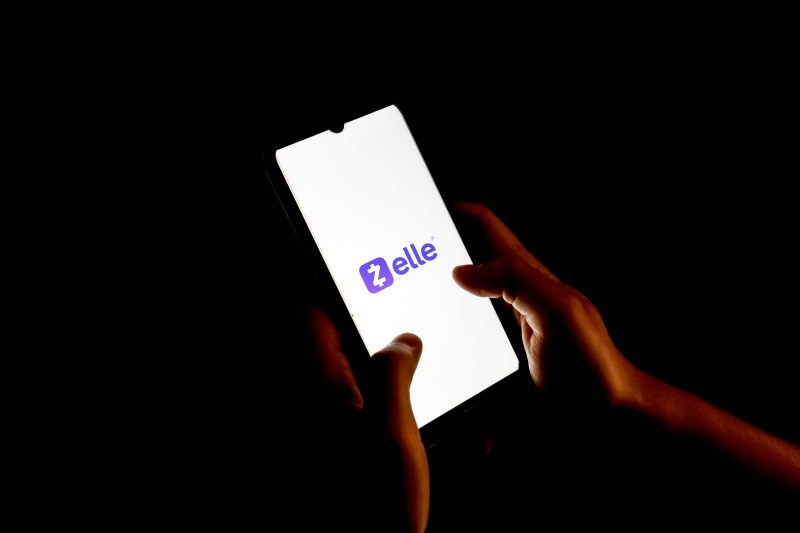
Banks on the payment app Zelle have begun refunding victims of imposter scams to address consumer protection concerns raised by U.S. lawmakers and the federal consumer watchdog, in a major policy change.
The 2,100 financial firms on Zelle, a peer-to-peer network owned by seven banks including JPMorgan Chase and Bank of America, began reversing transfers as of June 30 for customers duped into sending money to scammers claiming to be from a government agency, bank or existing service provider, said Early Warning Services (EWS), the banks’ company that owns Zelle.
That’s “well above existing legal and regulatory requirements,” Ben Chance, chief fraud risk officer at EWS, told Reuters.
Federal rules require banks to reimburse customers for payments made without their authorization, such as by hackers, but not when customers themselves make the transfer.
While Zelle disclosed Aug. 30 that it had introduced a new reimbursement benefit for “specific scam types,” it has not previously provided details on its new imposter scam refund policy due to worries doing so might encourage criminals to make false scam claims, a spokesperson said.
The new policy marks a major shift from last year when bankers, including JPMorgan CEO Jamie Dimon, told lawmakers worried about rising scams that it was unreasonable to require banks to refund transfers that customers were tricked into approving.
Following its launch in 2017, Zelle grew to become one of the largest U.S. peer-to-peer payments networks by total payments. A March 2022 New York Times report that scams were flourishing on Zelle caught the attention of lawmakers frequently critical of big banks, including Senator Elizabeth Warren.
She and other lawmakers started an investigation, estimating that Zelle users had lost $440 million to all types of fraud in 2021 alone. During a Senate hearing last year, Warren told Dimon and other bank CEOs that they had created a “perfect weapon” for criminals but had not stood by their customers. More than 100 million people, all with U.S. bank accounts, have access to Zelle, according to EWS.
Impersonator fraud was the most-reported scam in 2022 across all payment methods in the U.S., accounting for $2.6 billion in losses, according to the Federal Trade Commission.
Banks worry that covering the cost of authorized transactions will encourage more fraud and put them on the hook for potentially billions of dollars. Instead of requiring lenders to reimburse customers, EWS has implemented a mechanism that allows banks to claw back funds from the recipient’s account and return them to the sender, said Chance.
Lenders on Zelle are also now required to implement a tool that flags transfers with risky attributes, such as a payment to an account that has never transacted on the Zelle network, said Chance. He said Zelle has seen “a step-change reduction” in fraud and scam rates this year but declined to provide details.
“We have had a strong set of controls since the launch of the network, and as part of our journey we have continued to evolve those controls… to keep pace with what we see is going on in the marketplace,” he said.
Chance said EWS has been engaging with policymakers on the need for a “holistic approach” to combating scams, including advocating for more dedicated law enforcement resources.
Under pressure from Warren and other lawmakers, the Consumer Financial Protection Bureau (CFPB) considered compelling lenders to reimburse scams, but Zelle’s changes have so far satisfied the agency, said a person familiar with the matter.
A CFPB spokesperson declined to comment on Zelle or potential rule changes, but said the agency is working to protect customers “including by ensuring that financial institutions are living up to their investigation and error-resolution obligations.”
JPMorgan, Bank of America and Zelle’s five other owner banks declined to comment.
“Zelle’s platform changes are long overdue,” said Warren in a statement to Reuters. “The CFPB is standing with consumers, and I urge the agency to keep the pressure on Zelle to protect consumers from bad actors.”
Zelle has long argued its fraud and scam rates are low.
It processed $629 billion worth of payments in 2022, according to the network, with 99.9% of transfers made without a fraud or scam report.
It competes with other peer-to-peer payment platforms like PayPal and Venmo that review situations case-by-case and have a purchase-protection program for eligible transactions that covers scams. Experts note that it is difficult to compare fraud and scam rates across platforms because classifications vary.
Zelle’s u-turn shows how banks are feeling competitive pressure to step up the “market standard of care”, said Trace Fooshee, a strategic advisor at Datos Insights.
Still, regulations mandating imposter fraud protections would be better for customers since lenders’ policies may be unclear or they may not follow them as promised, said Carla Sanchez-Adams, a senior attorney at the National Consumer Law Center.
“The one thing that I think is problematic is that the consumer really wouldn’t know that they have that option, and if they do know, and if the bank fails to reimburse them, there is no private remedy,” she said, noting Zelle’s policy change was nevertheless a “good first step.”
Payment fraud is expected to come up again when bank CEOs appear before the Senate next month, according to industry experts. This time, they believe they have a good story to tell.
“The banks through Zelle — without regulation, without legislation — have actually proactively gone and said, we’re going to make sure that we are… trying to address any kind of consumer issue or harm,” said Lindsey Johnson, CEO of the Consumer Bankers Association.


Comments are closed.